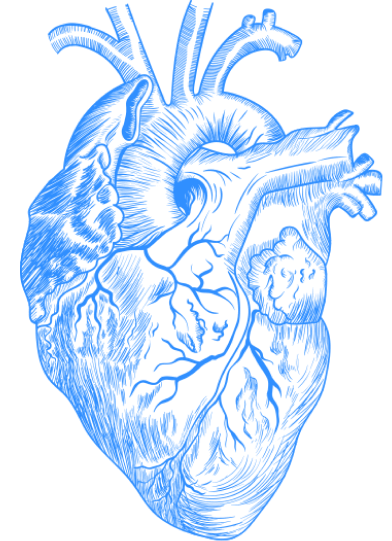
 |
| Hospital image via Shutterstock |
The paramedics flying the patient in by helicopter called the Emergency Department charge nurse and described the patient: a 40-year-old male in a construction accident with deep lacerations (wounds) to the left leg. The moment between the paramedics’ call and arrival was only a few minutes.
During this time, the ED notified the trauma surgery team that a patient may need surgical care and classified the trauma as level 1 (a level 2 trauma is less urgent). As the ED notified the trauma surgery team, the ED nurses and an ED resident prepared the trauma bay, which is just a larger patient room in the ED. They kept IV fluids at the ready; the blood bank prepared to get the patient blood; the resident placed an intubation kit at the stretcher side (if the patient is unconscious and cannot breathe on his or her own, the resident places a tube down the patient’s throat in order to get oxygen into the lungs); an oxygen mask was set to deliver oxygen; we medical students placed blankets at the bedside; and everyone put on gowns, masks, and gloves. The whole scene was chaotic, not least because of the sheer number of people involved: multiple nurses, an ED resident, a general surgery resident and/or an acute care surgery fellow, a trauma surgery intern, a pharmacist, medical students, and an x-ray technician to take immediate imaging if needed.
As the paramedics rushed the patient in on a stretcher (yes, just like in the movies), they recapped the patient presentation for the healthcare team and provided slightly more detail about the mechanism of injury. A construction worker accidentally dropped a chainsaw onto his leg. The metal edges of the saw cut through the patient’s left shin and thigh.
I don’t usually find blood upsetting. During surgery, I had no problem in the operating room watching the surgeons explore bowel or try to stop bleeding from a severed artery. Objectively, I comprehend that it is gruesome, but it doesn’t induce an intense visceral reaction. However, this particular event was absolutely disturbing. The metal blades cut the left shin so deeply that only half of the bottom leg was attached to the knee. The tibia and fibula bones jutted out of the skin over large, severed arteries and veins. Muscle and tissue clung to the leg by a few strands of skin as blood seeped from the wound. On the upper thigh, the damage was less intense — the saw tore through the quadriceps and the lateral leg muscles. Some of the superficial muscle hung off the wound, which bled much less severely. This sounds horrible, but the sight of this, akin to some kind of horror movie, was not so affecting until one pairs it with the fact that this patient was conscious.
His screams were charged with fear and intense pain, while he lay in a completely strange place with no family and no shortage of doctors and nurses and paramedics aggressively intruding on his personal space. I thought of this passage from Tolstoy’s The Death of Ivan Ilyich: the screaming “was so terrible that one could not hear it through two closed doors without horror…. ‘Oh! Oh! Oh!’ he cried in various intonations. He had begun by screaming ‘I won’t!’ and continued screaming on the letter ‘O.’” For this person to experience all this commotion and pain while also realizing the possibility of losing his leg must have been overwhelming.
But the struggle to provide medical care went on and the trauma assessment began. The upper-level surgery resident stood at the foot of the patient’s bed directing the healthcare team and the ED resident stood at the head of the stretcher making sure the patient could breathe. The nurses, meanwhile, confirmed that two IVs (one in each arm vein) were in place and working so that they could deliver blood, fluids, and pain medication as needed. The upper-level trauma surgery resident began with the primary survey, which identifies life-threatening injuries to the patient. For instance, an injury to the patient’s throat or mouth that prevents the patient from breathing is an immediate concern. The resident scrutinized the vital signs and quickly assessed for other urgent issues: airway (is the patient’s mouth clear from obstruction?), breathing, circulation (major blood loss), disability/neurological issues, exposures to toxins/environmental control. We frequently use the mnemonic ABCDE to remember this. The nurses completely stripped the patient of his clothing during this examination, for the sake of thoroughness.
If the patient is not on the verge of dying, the trauma surgery resident begins a secondary survey and fastidiously examines the patient head to toe for other, perhaps less urgent, signs of bruising, bleeding, or anatomical abnormalities caused by trauma to bones or tissue. The hospital staff roll the patient onto his or her side in order to get a clear view of the back and buttocks. The surgical intern usually performs this part of the exam, hollering out any abnormal findings to a nurse who stands outside the room, documenting the patient’s injuries to a computer. The resident also performs a FAST exam (Focused Assessment with Sonography for Trauma), where he or she uses ultrasound imaging to search for blood within certain parts of the abdomen, chest, and pelvis. It is a quick and effective way to assess whether a patient is bleeding internally and needs immediate surgery.
The healthcare team did a secondary survey as the patient continued to groan and scream. Because of the severity of the injuries to different systems, the trauma surgeons, orthopedic surgeons, and vascular surgeons all came to assess what kind of surgery this patient needed. After a quick huddle with the attending physicians, the nurses wheeled the patient straight to the OR, never to be seen or heard from by me again. The one aspect of this patient’s prognosis that I do know is that the surgeons thought they could save this patient’s leg and its function, which is demonstrative of the miraculousness of modern medicine.
In the early seventeenth century the great English poet, cleric, and lawyer John Donne reflected upon sickness and health in a book called Devotions upon Emergent Occasions, after battling illness himself. In it, he wrote that “we study health, and we deliberate upon our meats, and drink, and air, and exercises, and we hew and we polish every stone that goes to that building; and so our health is a long and a regular work: but in a minute a cannon batters all, overthrows all, demolishes all….” There is nothing quite like a trauma to reinforce Donne’s observation about how fragile our condition remains; being struck by a car or being in a construction accident shoves us off the tenuous tightrope of health on which we walk. Here, a healthy patient in the prime of his life was nearly destroyed by poor fortune.
This is also an example of losing track of a patient’s outcome, which is so common in medical school and residency. I’ll never know his whole story — as I’ve written, this is something that contributes to cynicism in medicine.
And another thought on this trauma: a Chinese proverb states that “no man is a good doctor who has never been sick himself.” This certainly sounds right. How can one understand a patient until experiencing his pain? I disagree, though. We know that many who see other people in pain experience pain themselves. But further, the power of human empathy can be surprisingly vast. True that nurses, students, and doctors may not directly feel the pain of a sharp metal edge slicing through flesh, but can we not comprehend the horror of this? Can we not, in an admission of never wanting something like this to happen to us, experience in a small way the terror of such an event? An empathetic emotional response is enough to prime healthcare workers to take great care of a patient. The potential problem in medicine, then, is not what the Chinese Proverb suggests. The possible outcome is that when we see people like this every day, the once-astonishing horror becomes treated as a daily experience.

That's downright scary.